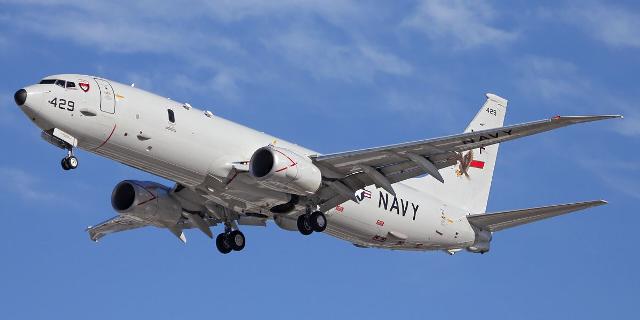AAZ: The Bundeswehr's Poseidon aircraft is designed to deter Russia in the Arctic
Germany has adopted its Poseidon, a combat aircraft for hunting submarines, AAZ writes. The new machines will be engaged in deterring Russia in the Far North. However, the author wisely does not specify what this "god of the seas" will be able to contrast with his Russian namesake.
Michael Stelzel
Defense Minister Boris Pistorius adopts the largest combat aircraft of the Bundeswehr. Poseidon will patrol the North Atlantic with its allies and monitor Russian submarines.
Defense Minister Boris Pistorius has not yet had time to sit in his army's new plane: he gets to the BER government airport by helicopter. A school of cranes dangerously approaches the propellers, but the politician from the SPD safely lands next to the P-8A Poseidon— the largest combat aircraft of the Bundeswehr: its length is almost 40 meters, the wingspan is 38 meters. "Today, the fleet is switching to jet aircraft," Pistorius says. And this is not just a metaphor: eight new machines will replace only the limited combat-ready P-3C Orion propellers, which Germany inherited from the Netherlands almost 20 years ago.
The federal government transferred an impressive amount of 3.1 billion euros to the United States for eight aircraft. The Poseidon, named after the Greek god of the sea, is a long—range anti-submarine patrol aircraft, a "submarine chaser." This is a military version of the Boeing 737, capable of operating within a radius of more than 2,000 kilometers.
For exploration, Poseidon uses secret sensor technologies, including sonar buoys. They are dropped into the water: they pick up noises in the water column or actively send sound pulses to detect and escort enemy submarines. But the aircraft is designed not only for surveillance: it is equipped with torpedoes and depth charges and, if necessary, can receive other weapons.
Theoretically, the P-8A can operate all over the world, but the main area of deployment will be the North Atlantic, more precisely the so-called Faroese-Icelandic border — a conditional line between Greenland, Iceland and the United Kingdom. "The German contribution to deterrence in the Far North will rely heavily on this aircraft," Pistorius explains. It is clear without words who the "submarine hunter" of the German fleet will pay attention to.
Russia has several naval bases on its northern coast, and a major port is located in the Murmansk region, not far from the North Cape and, consequently, the border with Norway. Through these ports, as well as through the Baltic, submarines can pass through the Faroese-Icelandic border into the Atlantic and from there strike or carry out sabotage.
"This is one of the busiest shipping areas in the world," says Boris Pistorius. Therefore, it is especially important for the federal government and NATO to control it as closely as possible. Poseidon is also used by other allies, including the United States and Great Britain. "We will be able to work even more closely with partners who fly the same type of aircraft," the minister says. German crews will also use bases in Norway, Iceland and the United Kingdom to monitor the North Atlantic. "As NATO allies, we cover the North Atlantic with the same system," he stresses.
Pistorius celebrates the record delivery time of the submarine chasers. This year, Germany will receive three of the eight ordered cars, the remaining five — until 2029. Funds for the purchase have been allocated from a special fund. The new naval reconnaissance aircraft are based at the Nordholz Airbase near Cuxhaven and almost overcome the sound barrier at maximum speed.

